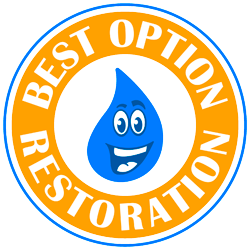Mold growth can pose significant health risks and damage to your property. Understanding the process of mold remediation is vital for homeowners and business owners alike. This guide will walk you through the essential steps for safe and effective mold remediation, ensuring you take appropriate actions to protect your space and loved ones.
Understanding Mold Remediation
What is Mold Remediation?
Mold remediation is the process of identifying and removing mold infestations in a building, ensuring the environment is safe for occupants. This process involves several steps to not just remove the visible mold but to address the underlying conditions that allowed mold to thrive in the first place.
Common Causes of Mold Growth
Mold thrives in damp, humid environments. Common causes of mold growth include:
- Leaking pipes: Water leaks can create conditions favorable for mold.
- Poor ventilation: Spaces that lack proper airflow can trap moisture.
- Flooding: Water intrusion from external sources can lead to quick mold growth.
- Condensation: High humidity levels and condensation on surfaces can also promote mold growth.
Health Risks Associated with Mold
Mold exposure can lead to various health problems, particularly for individuals with respiratory issues or allergies. Common health risks include:
- Allergic reactions
- Asthma attacks
- Respiratory infections
- Skin irritation
Benefits of Professional Mold Remediation
Hiring professional mold remediation services ensures the mold is identified, contained, and removed appropriately. Benefits include:
- Expertise: Professionals understand the intricacies of mold growth and remediation.
- Safety: They use protective gear and equipment to safely remove mold.
- Efficient Processes: Professionals have established protocols to ensure effective remediation.
Steps in the Mold Remediation Process
Step 1: Initial Mold Assessment
The first step in mold remediation is a thorough assessment of the affected area. This involves identifying the extent of the mold growth and determining the underlying moisture source. A professional inspector can conduct tests to identify mold species and assess contamination levels.
Step 2: Mold Containment Procedures
Once the assessment is complete, the next step is to contain the mold. This may involve sealing off affected areas to prevent mold spores from spreading to other parts of the building. Negative air pressure systems may also be employed to maintain containment.
Step 3: Air Filtration Systems
Installing air filtration systems helps to capture mold spores and other particulate matter from the air during the remediation process. HEPA filters are commonly used for their efficiency in trapping tiny particles.
Step 4: Removing Mold and Mold-Infested Materials
The removal process involves discarding mold-infested materials (e.g., drywall, insulation) that cannot be cleaned. Surfaces that can be salvaged will be scrubbed and treated with appropriate cleaning solutions.
Step 5: Cleaning and Sanitizing the Area
After removing mold-infested materials, the area must be thoroughly cleaned and sanitized. This includes using specialized solutions designed to eliminate any remaining mold spores.
Step 6: Restoration of Affected Areas
Once the area is clean and dry, restoration work begins. This may involve repairing damage caused by mold and replacing removed materials, ensuring the space is safe and welcoming once again.
Step 7: Final Mold Inspection
After the remediation process is complete, a final mold inspection should be conducted. This step ensures that mold has been effectively removed and that no further threats remain. Professionals may use moisture meters and air quality testing to confirm the success of the remediation efforts.
Choosing the Right Mold Remediation Company
Importance of Hiring Certified Professionals
Finding the right mold remediation company is crucial for effective handling of the situation. Certified professionals have the training and expertise to detect, manage, and eliminate mold problems. When hiring a company, ensure they are certified by a recognized organization in mold remediation.
Questions to Ask Mold Remediation Companies Near Me
When considering mold remediation companies near you, ask the following questions:
- What is your experience with mold remediation? This helps assess their expertise and capabilities.
- Do you have proper licensing and insurance? Insurance protects you from liability in case of accidents during remediation.
- Can you provide references or case studies of past work? This allows you to evaluate the quality of their work.
- What methods will you use for mold removal? Understanding their techniques can help you ensure they follow best practices.
Evaluating Mold Remediation Costs
The cost of mold remediation can vary significantly based on the extent of the mold problem, the location, and the methods used. On average, mold remediation costs can range from a few hundred to several thousand dollars. It’s essential to get multiple quotes from different companies, ensuring you compare not just the price but the services included in each estimate.
Finding Mold Remediation Near Me
When searching for mold remediation near you, consider using online search engines and review platforms. Look for local companies with a solid track record, read customer reviews, and consider the company’s presence in your community. A local company is more likely to understand the specific challenges related to your area’s climate and building types.
Takeaways
Addressing mold growth promptly and effectively is crucial for maintaining a healthy living or working environment. By understanding the essential steps involved in mold remediation and choosing the right professionals, you can ensure your space remains safe and clean. Remember to conduct thorough research and ask the right questions when selecting a mold remediation company, and you’ll be on your way to a mold-free environment.
For expert mold remediation services in Suwanee, contact Best Option Restoration of North Fulton today!
